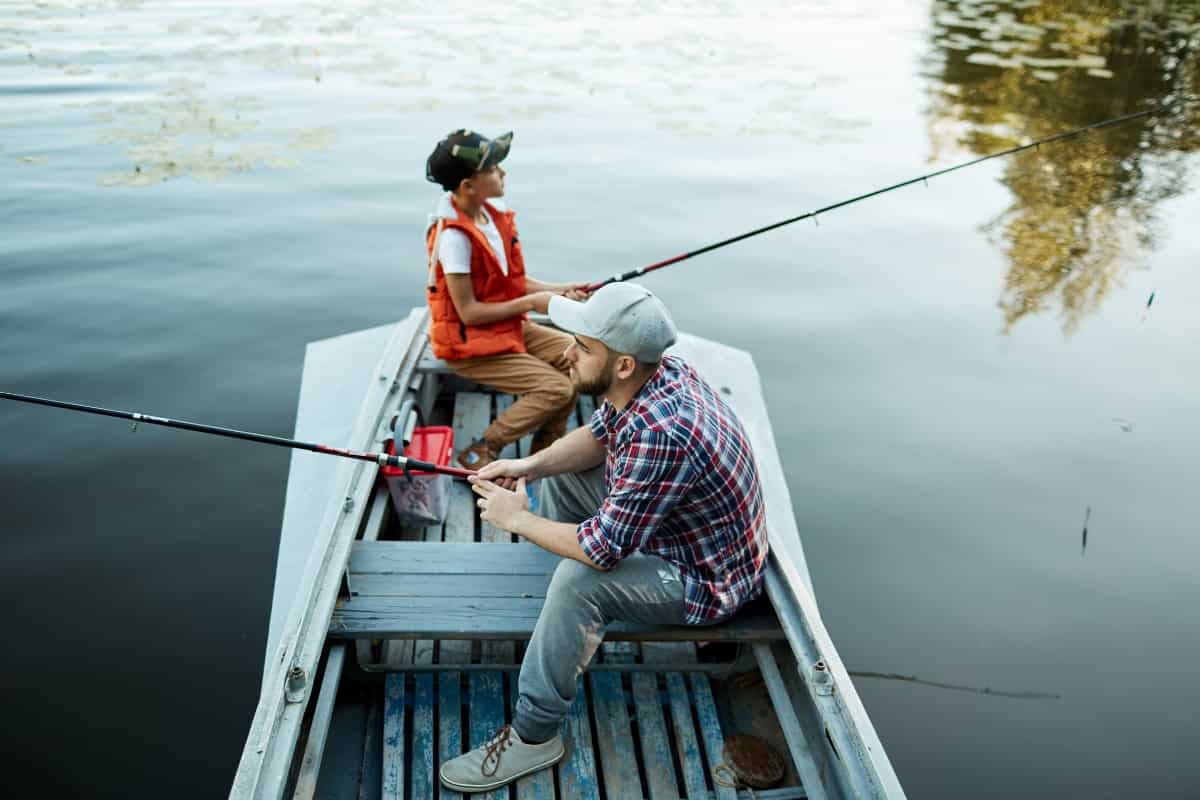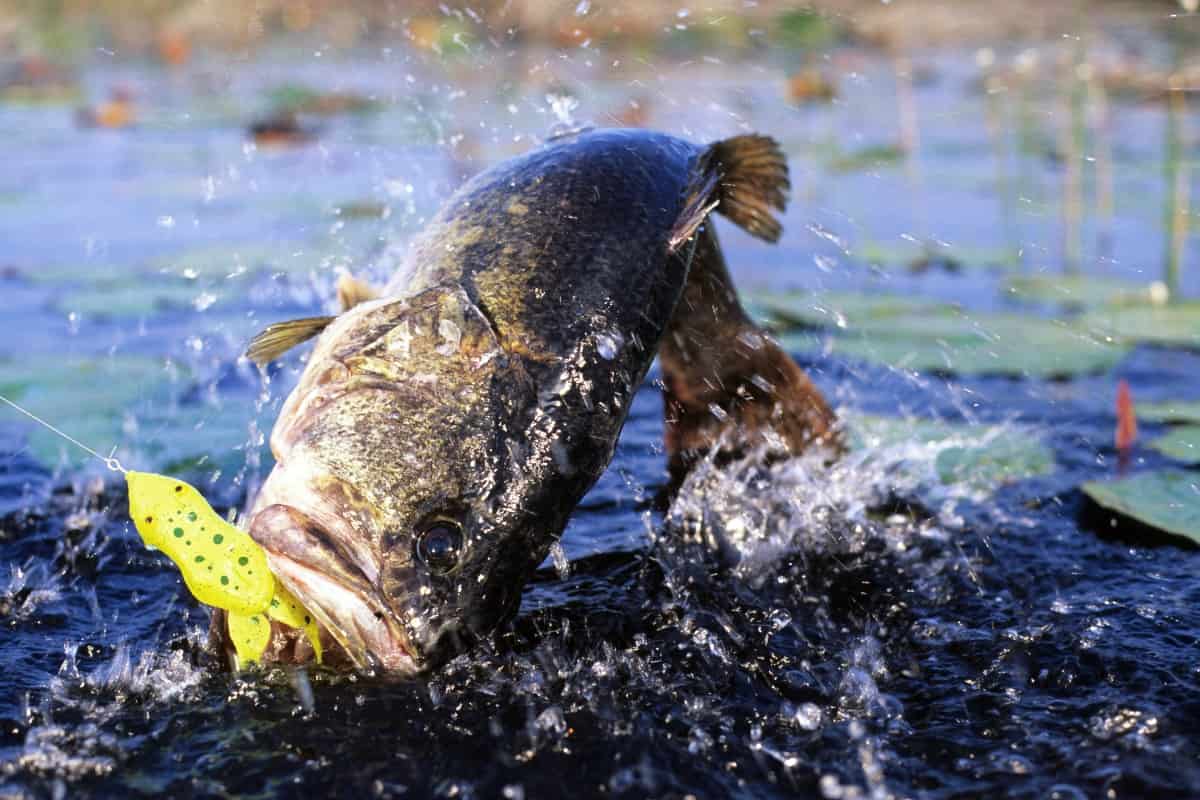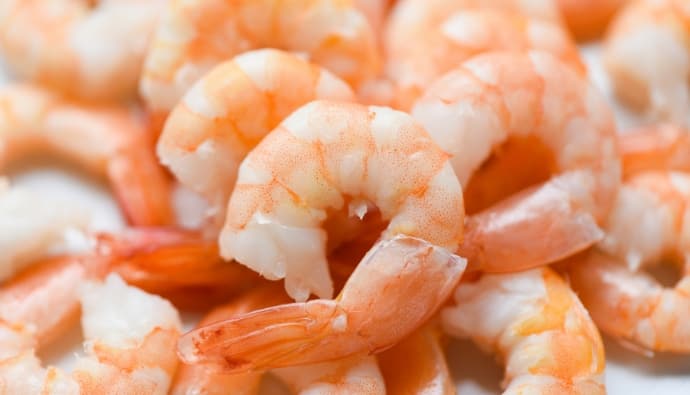Are you interested in how to catch red bass, also know as the two-spot snapper? This large tropical snapper can grow up to 28 pounds and are a popular game fish. In this guide, we share our research on the best ways to target this species recreationally.
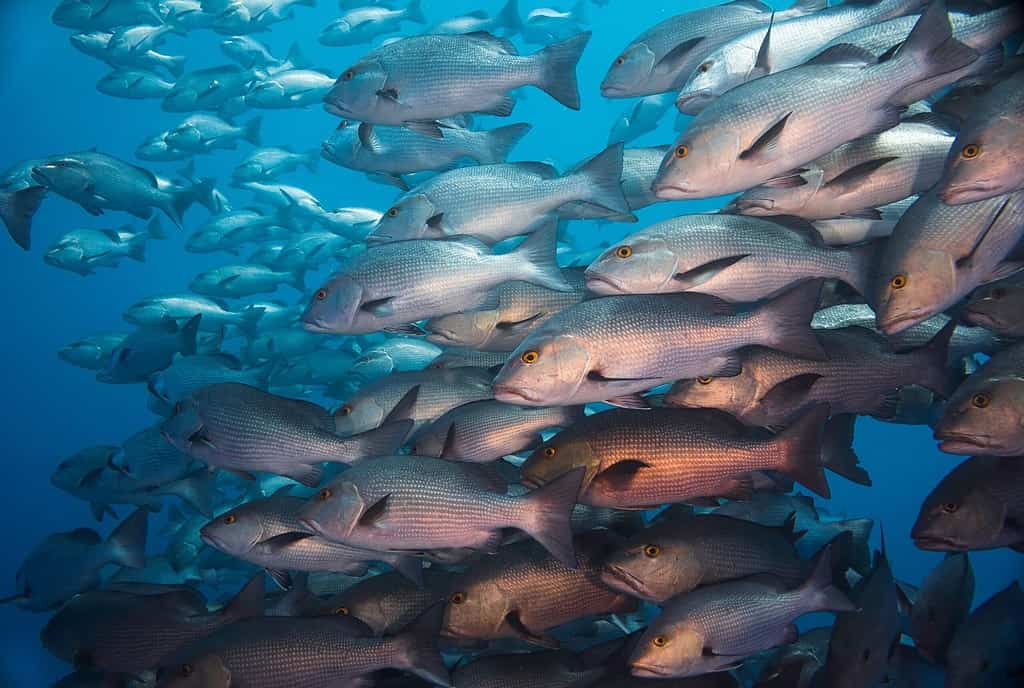
Sporting a powerful jaw full of razor-sharp teeth and a broad, muscular body and wide tail, the red bass or two-spotted snapper is nothing to sneeze at.
Seconded by only the giant trevally in power, this bass is a sportfish that is worthy of its reputation. The fish can be found in the tropical Indo-Pacific region from East Africa, Asia, and the Line Islands.
During the day, the body of the two-spotted snapper turns dark brown, and at night, it fades to a pale yellow or red. The fish feeds on other fish, crabs, mollusks, and shrimp and is known for its powerful bite. It’s not a great table fish as consumption can cause, but it is considered a top-notch sport fish because of the fight it puts up when caught.
Two Spot Red Snapper Facts
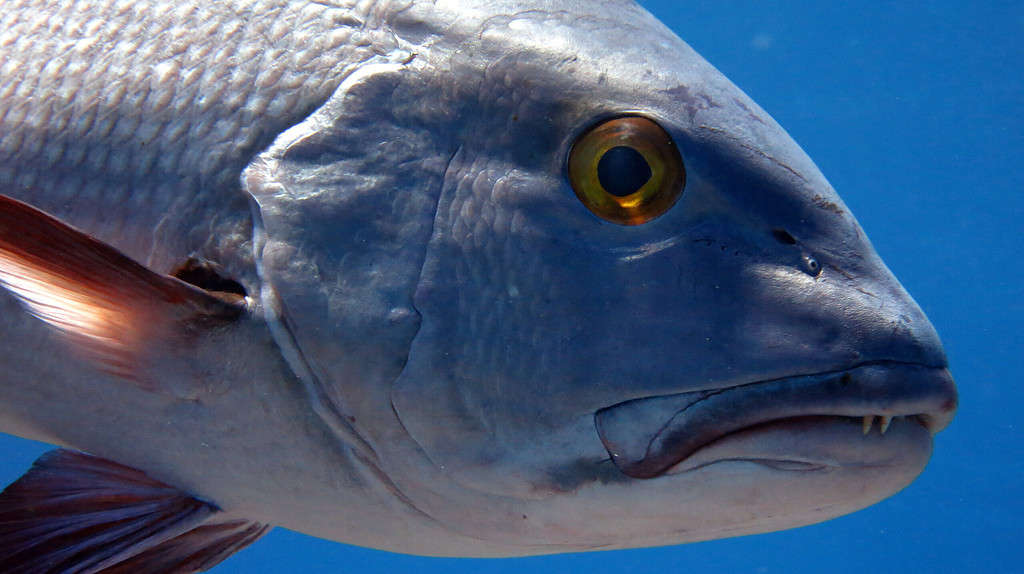
| Scientific Name | Lutjanus bohar |
| Common Name(s) | Red Bass, Two-Spotted Snapper, Mangrove Red Snapper, Twinspot Snapper |
| Family | Lutjanidae |
| Identifying Characteristics | It has a powerful jaw full of razor-sharp teeth and a broad, muscular body, and a wide tail. |
| Depth Range | 4 to 180 m |
| Habitat | The fish is found in the tropical Indo Pacific region from East Africa, throughout Asia, and around the Line Islands. |
| Limits | Check your local regulations |
| Largest Recorded | 50 pounds, 4 ounces |
Red Bass Habitat
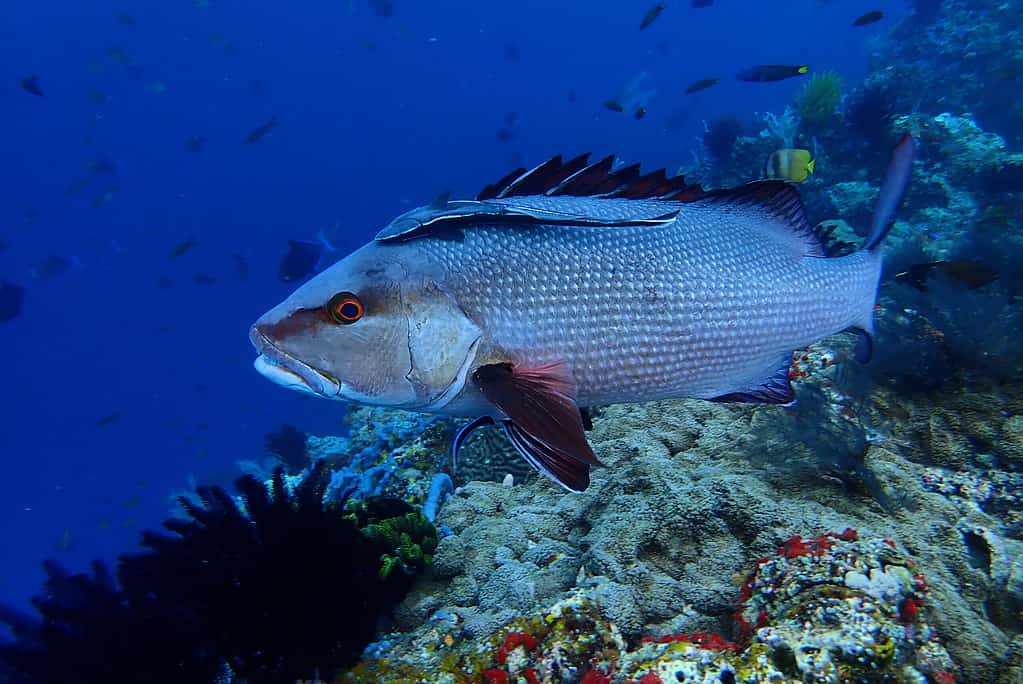
Also known as channel bass and redfish. The two-spotted snapper fish prefers to remain around coastal islands and isolated mainlands that have little to no human population or traffic.
It can be found 4 to 180 m deep in healthy reefs as well as near drop-offs, shallow coral, and steep ledges. Many can also be found in sheltered bays and lagoons.
How to Catch Red Bass
If you are targeting large red bass, you need a heavy tackle with at least a 50 lb braid and a medium-heavy spinning outfit. If you are near-shore or shallow reefs, you can make do with smaller ones with a 30 lb braid but not for a two-spotted snapper over 50 lbs.
You can use a variety of natural bait to lure the fish, such as minnows, shrimp, mullet, menhaden shad, etc. If you prefer artificial bait, use deep-diving ones like plugs and jigs.
Many lures for red bass resemble those for black bass, all of which look like baitfish. However, plastic swim tails or grubs on jig heads are popular choices.
Lures vs. Bait
Lures are better than bait for this fish since it is quite aggressive and likes to chase its prey. If you are using poppers, do not set the hook till you feel it biting, or it may not get hooked. You can also use stickbaits, but make sure that you fish these slower than you would for trevally. Red bass usually strikes when there is a pause.
Red bass fish are highly competitive and will often push each other aside to get at an enticing lure or bait. Use surface poppers to get the adrenaline running as the fish goes crazy trying to get at it. Poppers such as durable bloopers with good hardware are preferable even if the fish is deep underwater. Two-spotted snapper will swim up to a popper that is well presented.
Mangrove Red Snapper Fishing Tactics
- Red bass often hunts by scent, so use a jig that has a tail that emits one to attract the fish, such as the Berkley Gulp shrimp lure.
- If you are sight fishing for Mangrove Red Snapper fish over grassed bottoms, use weedless soft plastics as bait such as the Yum Money Minnow. This won’t hang up even if it is cast in the deepest cover. Plus, the paddle tail will make it mimic motion, so all you will need to do is reel in fast when needed.
- If the water is cold and the two-spotted snapper is sluggish in the water, use a popping cork with a shrimp-tipped jig. The sound of the cork will wake up the fish, and the smelly shrimp will lure them into biting.
Red Bass Fishing Tips
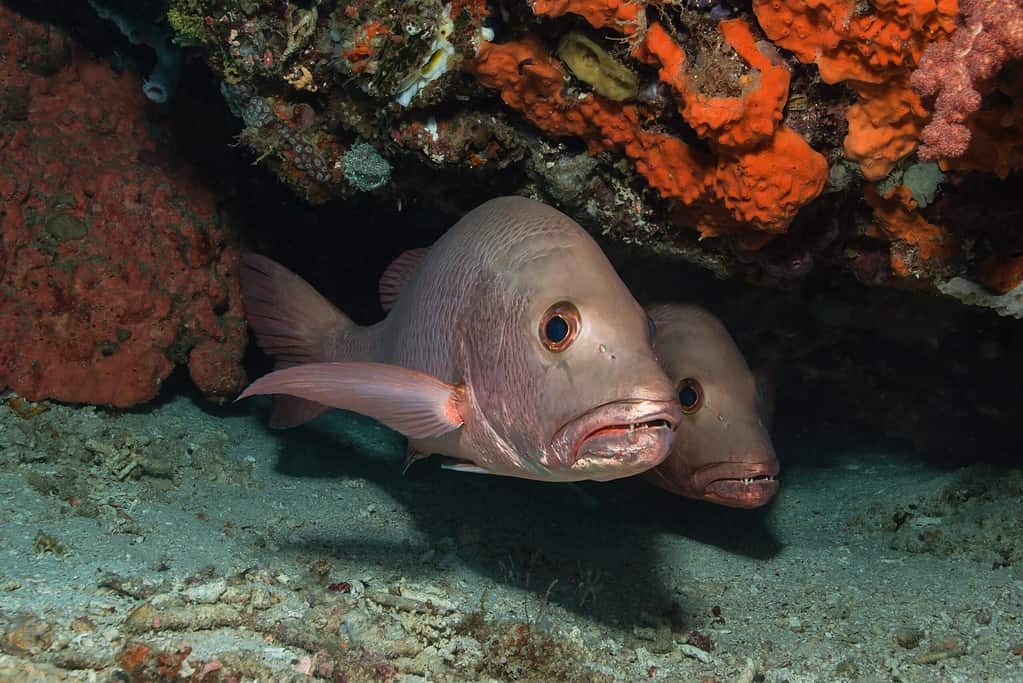
- Fish for red bass in the creeks and estuaries along the coast and especially in areas that are rich in baitfish such as minnows.
- Fish on an outgoing tide to target feeding red bass that comes off a marsh flat and drop back in the river or creek. Where there are some, you will find way more.
- If you fish for 15 minutes without getting a bite on one structure, move on to the next.
Two-Spot Red Snapper Seasons
two-spotted snapper migrates offshore in winter to deeper water, and during that time, the fish remains on natural and artificial reefs.
During the summer, it swims inshore, where it can find plenty of baitfish to feed on. In the fall, it frequents deeper water channels that head to the ocean. These are the biggest ones you can find at this time.
Frequently Asked Questions
Where can I find a big red bass?
You can find big red bass around New Caledonia, and the Great Barrier Reef.
Is red bass good for you?
Due to the high probability of ciguatera poisoning, red bass isn’t good for you. Tt has very little commercial value as a table fish. However, its fierce fighting spirit makes it a formidable sport fish.
What is the best time to catch a red bass?
The best time to catch a red bass are on nights with a full moon, making small fish and baby turtles on the water’s surface visible. Use dark subsurface lures to target the fish at night.
Final Thoughts
The red bass fish may be notorious as a vicious fighter, but that is what makes it an excellent sport fish. Fish for it early in the morning or late in the evening to increase your chances of hooking one.




 Facebook
Facebook YouTube
YouTube


